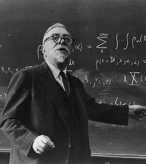Artificial Intelligence – The Curious Case of Ethical Alignment
By Sudhir Tiku, Fellow of Alliance for AI & Humanity (Fellow AAIH)

Introduction:
1. What is Alignment Problem?
1.1. What to Align?
- Articles 1–2 establish the basic concepts of dignity, liberty, and equality.
- Articles 3–5 establish other individual rights, such as the right to life.
- Articles 6–11 refer to the fundamental legality of human rights with specific remedies cited for their defence when violated.
- Articles 12–17 set forth the rights of the individual towards the community, including freedom of movement and right to a nationality.
- Articles 18–21 sanction “constitutional liberties” and spiritual, public, and political freedoms.
- Articles 22–27 sanction an individual’s economic, social and cultural rights, including health care.
- Articles 28–30 establish the general means of exercising these rights
As humanoids and robots will start becoming more pervasive and they will work in our homes, offices, industries and cities, a good starting guideline for their ethical deployment can be borrowed from the Three Laws of Robotics by Isaac Asimov.
- The robot may not injure a human being or, through inaction, allow a human being to come to harm.
- A robot must obey orders given it by human beings except where such orders would conflict with the First Law.
- A robot must protect its own existence as long as such protection does not conflict with the First or Second Law.
There is also an opinion that AI model should not just focus on ULTILITARIAN motives of larger good but focus on individual views also. This gets credence from the Social Choice Theory which is based on pluralistic approach of value alignment. This theory does not aim to find common principles but aggregates the individual view bottoms up. This will need the AI agents to respond to ethics preference of people (one to one basis) in real time. Under this approach the AI agent will have to collect the related and relevant data and process it in such a manner that the decisions are aligned to what an individual values or desires.
An overarching ecosystem of responsible Regulation can help to ensure that the agreed upon Values are inserted into the AI models by the industry. However, Regulation often stifles innovation and hence there has to be a very open and positive discussion on Regulation of AI. This is important because AI, as a technology, has a huge potential to solve the greatest challenges faced by humanity like disease, death, climate change and uneven distribution of assets like education. AI can democratise the inputs and outputs if steered in the right manner.
1.2. HOW TO ALIGN:
2. Conclusion:

Two decades before the birth of internet, mathematician and philosopher Norbert Wiener, who coined the word cybernetics, gave us insights on what was coming in his book called The Human Use of Human Beings: Cybernetics and Society.
He prophetically wrote as under:
“If we use, to achieve our purpose, a mechanical agency with whose operation we cannot efficiently interfere once we have started it, then we better be sure that the purpose put in the machine is the purpose we really desire “
It is responsibility of all of us, as an interested party in the unfolding game of AI, to ensure that we are sure of how we want to use AI; why we want to use AI and what is our End purpose.
>>>>>>>>>>>>>>>>>>>>
Author: Sudhir Tiku is a Fellow of AAIH, Futurist and Automation expert based out of Singapore. He works in a global Multinational company and his work focus is Vision and Video Analytics. He is a columnist, Climber and is a regular speaker in the TEDx circles of Asia Pacific.
